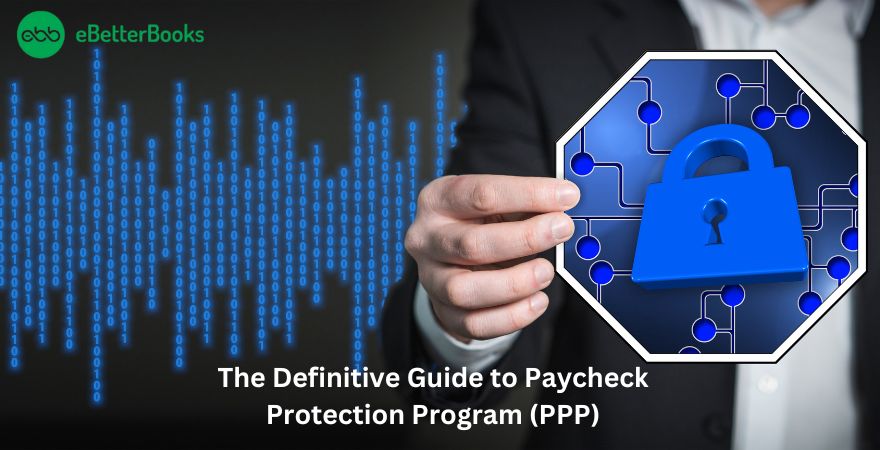
Contents
The USA’s federal government signed the CARES act on March 27, 2020, into the law- a coronavirus relief bill direct at supporting small businesses across the current pandemic. One segment of the bill is the paycheck protection program – let we look deeper into it.
Paycheck Protection Program or PPP is a loan program that sprouted from Coronavirus Aid, Relief, and Economy Security (CARES) Act.
At first, it had a $350 billion budget and intended to provide cash flow encouragement to the American small scale businesses for eight weeks through 100 percent federally guaranteed loans.
In late April, this program was extended by Paycheck Protection Program and Health Care Enhancement Act, summing up an extra $310 billion in the subsidy.
At present, the Paycheck Protection Program Flexibility Act has made significant changes to the program by authorizing extra time to spend the funds and forgiving loans easily.
The Paycheck Protection Program loans tend to be more substantial than the SBA disaster loans. So the answer is most likely a yes. Small business owners, sole proprietors, and independent contractors can easily qualify.
It is mandatory to use 60% of the loan for the payroll and the employee benefit expenses.
You can use the remaining 40 percent on:
If you follow the guidelines, strictly you can write off your debts.
So basically, most of the payroll value are covered; however, some are not like:
If any of your employees or you exceed the amount of $100,000 per annum, you can only claim to $100,000, nothing over that; suppose an employee earns 120,000 annually, you can deduct 20,000 from his income the PPP. It is going to save $8,333.33 monthly payroll.
If you are self-employed and your annual income is exceeding $100,000, you will still be limited to $100,000, leaving your average monthly payment to be $8,333.33.
The maximum value you can receive is your average monthly payroll amount in 2019 multiplied by 2.5 up to $10 million by an SBA-approved moneylender.
For migrational employers, the standard monthly income calculation will be different. The moneylender shall use 12 weeks starting either on March 1, 2019, also terminating on June 30, 2019, or February 15, 2019.
If your business has just established and did not exist before June 30, 2019, the moneylender will inspect your expenditures in January and February 2020.
The SBA does not allow loans itself but covers them instead. You can refer to SBA’s lender’s tool.
Sole proprietors can apply from April 3. Self-employed people can appeal from April 10. We encourage you to use it for the same as there is a funding limitation in this program. August 8 is the deadline for the submission of an application.
As a part of your appeal, you will have to answer a few questions for the verification, such as:
You will have to provide payroll or bookkeeping records to prove your expenses, including:
If you are a self-employed person and do not have an out and out schedule C for submission, you will most probably need to get subsequent bookkeeping to compute your net profit, and that is how your loan value will determine.
If an owner owns more than a business, it will become quite difficult for him to get relief funding as his company might not have separate finances.
If you do own more than one business, you have to keep your bookkeeping transactions done for each company separately. It will become essential when the time comes to prove your expenses during the loan forgiving process.
All your expenses can be excused in 24 weeks within your loan signing period, including the following ones:
You will have to keep accurate records and bookkeeping as evidence of your expenses during the loan phase. You will need to have spent 60% of the funds on the payroll if you want to qualify to write-off all your debts.
The moneylender is obligated to decide within 60 days of the submission of your loan forgiveness.
The Paycheck Protection Program aims to protect paychecks.
You have to commit to maintaining an average number of employees equivalent to full-time or above that monthly during the last year, and it is a must for you to spend 60% of the funds on the payroll.
The amount to forgive could deduct to:
If you hire employees again who you expelled at the starting of the period or restore any deduction in the salary of wages made at the starting phase, penalization for reducing the employees or wages will occur as long as you do it before December 31, 2020.
The employees you fired earlier might not wish to get back on payroll and reject your re-employment offer. In that case, you can exclude that employee while calculating forgiveness.
To qualify for this exemption, you need to:
Important note: The employee who rejects the offer letter for re-employment can not continue unemployment benefits.
Yes! It is alright to apply for PPP through more than one moneylender. Who-so-ever first receives your application will receive a number approved by SBA for your company known as PLP.
The SBA issues just one PLP per tax ID; hence, there is no chance you will approve for two PPP credits.
If your PPP loan approves, your application with the other moneylenders will automatically reject. Therefore, it is better to withdraw the application from the other moneylenders after your loan’s approval.
Yes, you can, but you can not apply it the same as the Paycheck Protection Program. While applying for an SBA disaster loan, you may request an interest-free $10,000 emergency grant.
It depends on your self-employment income if you are a sole proprietor.
Precisely, this is going to be the net profit documented on your Schedule C.
Payroll expenses are limited to $100,000 for each individual. If you earn more than that, use $100,000 as your total revenue and $8,333.33 as your monthly revenue.